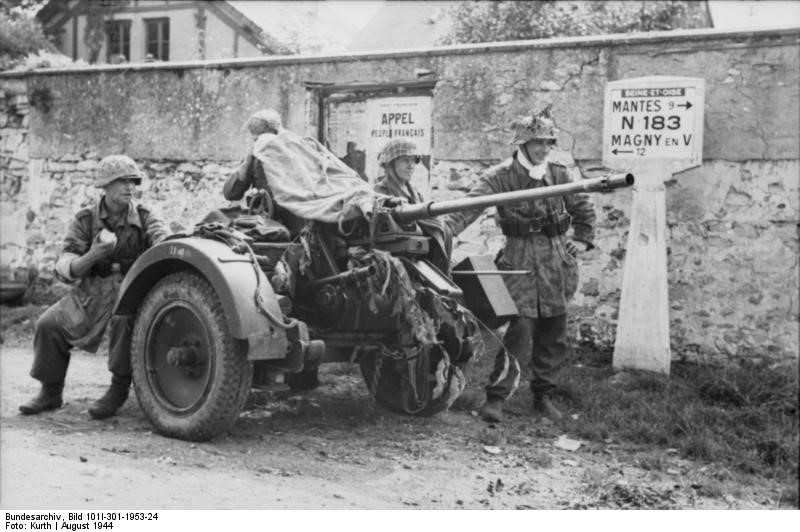
| Year | April 1934 |
| Weapon Type | Light Anti-Aircraft Gun |
| Origin & Designer | Germany/Rheinmetall |
| Numbers Produced | 7000 |
| Crew | 7 |
| Calibre | 20mm (20x138) |
| Elevation | -20° to +90° |
| Traverse | 360° |
| Breech | Recoil Operated |
| Recoil | [@recoil] |
| Gun Sight | Flakviser 35 |
| Gun Mount | Triangular Platform |
| Carriage | Sd. Ah. 51 |
| Trailers | [@trailers] |
| Gun Shield | [@gun_shield] |
| Armoured Plate | [@armoured_plate] |
| Barrel Length | 1.300mm (L/65) |
| Overall Length | 4.08m |
| Width | 1.81m |
| Height | 1.60m |
| Weight | Weight in Traction: 470 kg Weight in Action: 364 kg |
| Round Weight | 0.136 kg (HE - 2cm Patr. Sprgr. L’spur) 0.1 kg (AP - s.PZ.B.41) |
| Muzzle Velocity | 888 m/s (HE) 1.050 m/s (AP) |
| Feed | 20 Round Box Magazine |
| Magazine Capacity | [@magazine_capacity] |
| Practical Rate of Fire | 120 r.p.m. |
| Rate of Fire | [@rate_of_fire] |
| Maximum Rate of Fire | 280 r.p.m. |
| Maximum Ceiling | 2.134m |
| Maximum Ground Range | 4.800m |
| Maximum Range | [@maximum_range] |
| Armour Penetration | 20mm @ 500m @ 30° |
| Traction | Motorised (Protze Kfz 69 & Sd.Kfz 10) |
| Variants | [@variants] |
| Notes | The Flak 30 was the first in a series of light anti-aircraft guns to see serves with the German army. It was a complexed design based on a platform which gave a 360 degree traverse. It had a slow rate of fire and was prone to jam and because of this fault it was replaced by the Flak 38. |